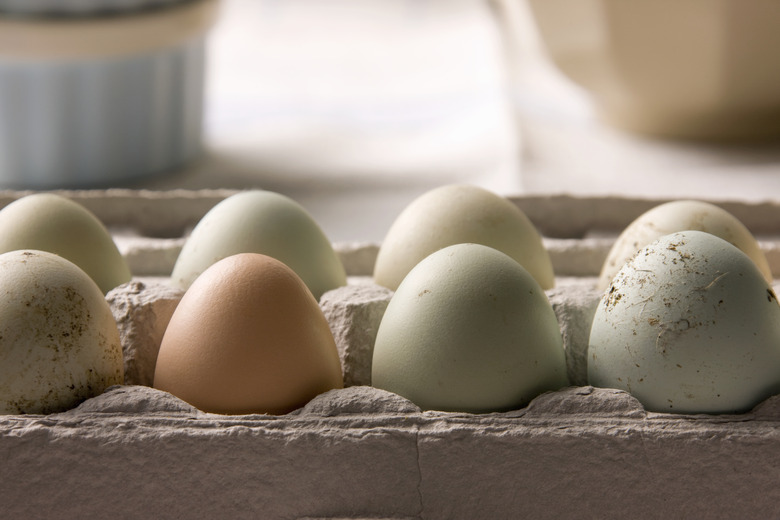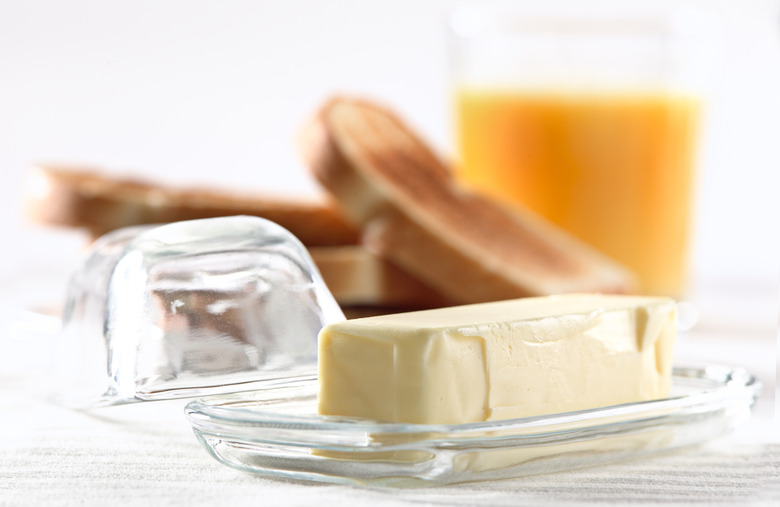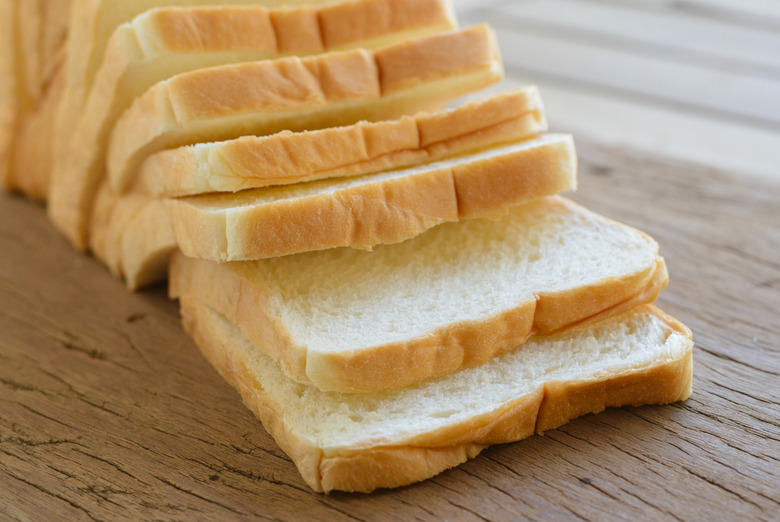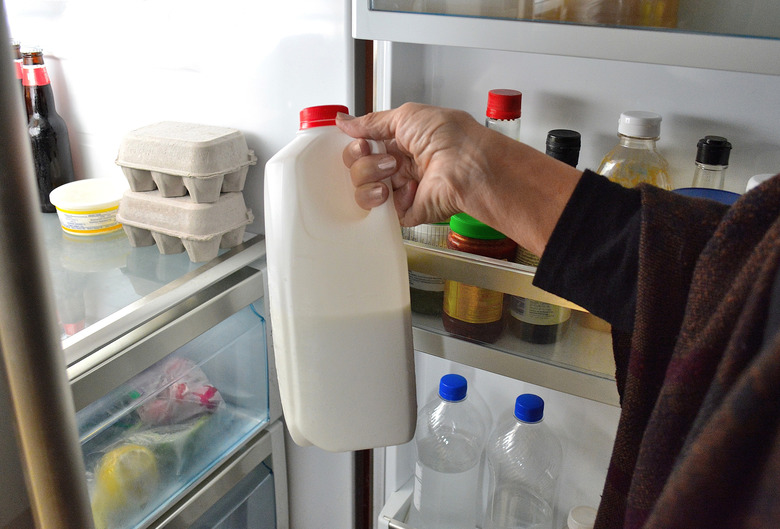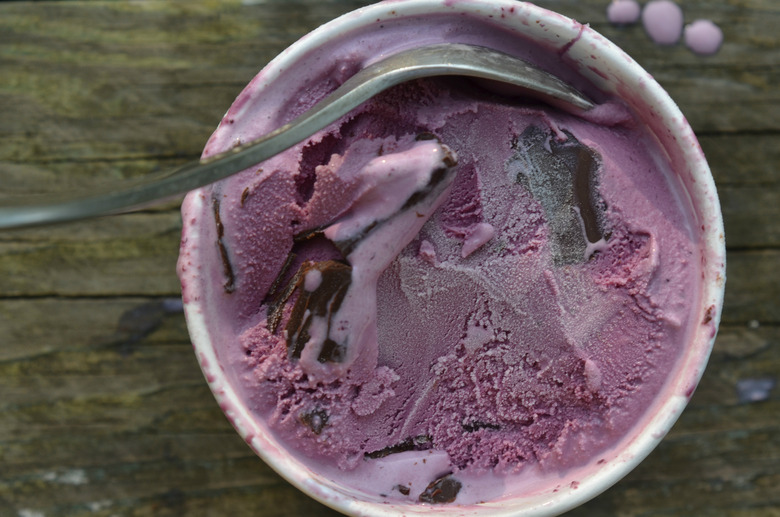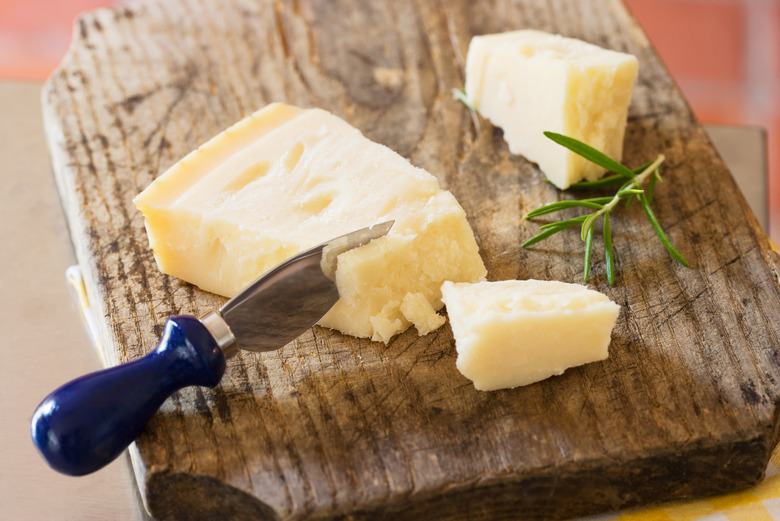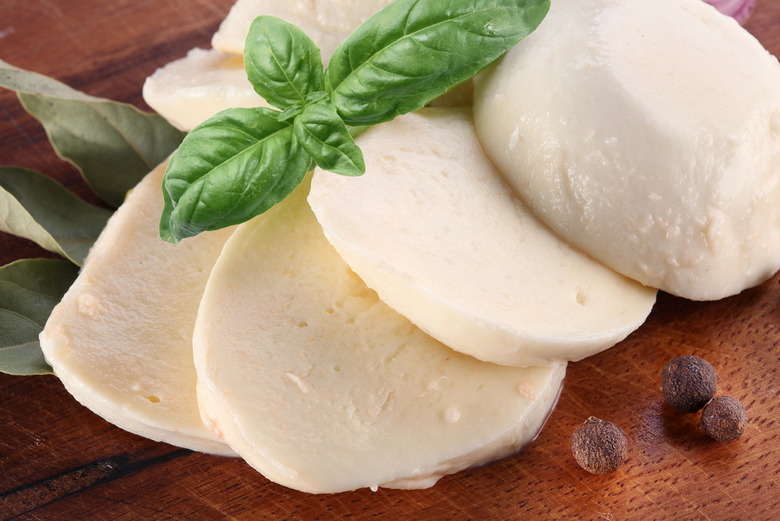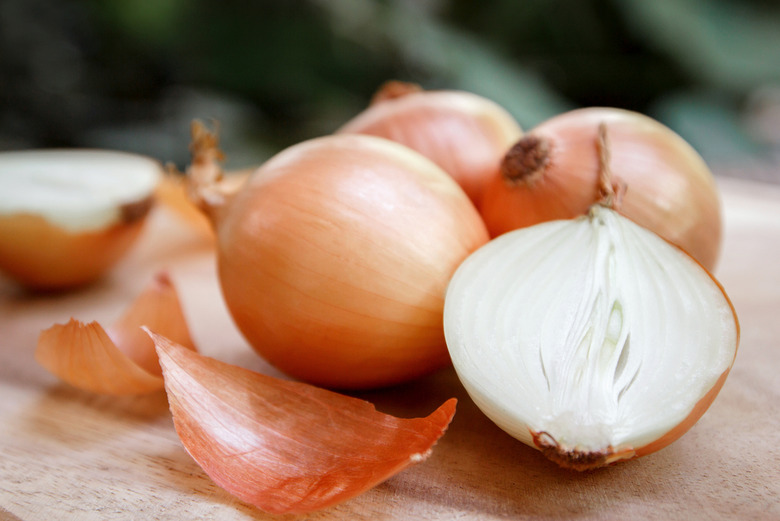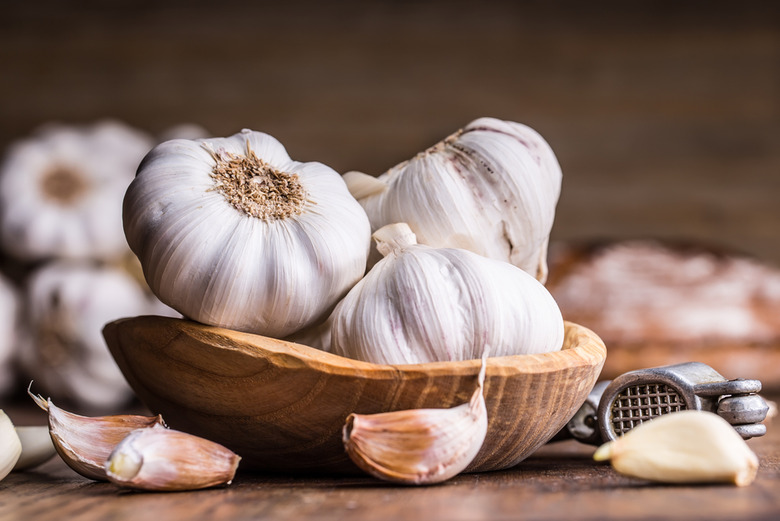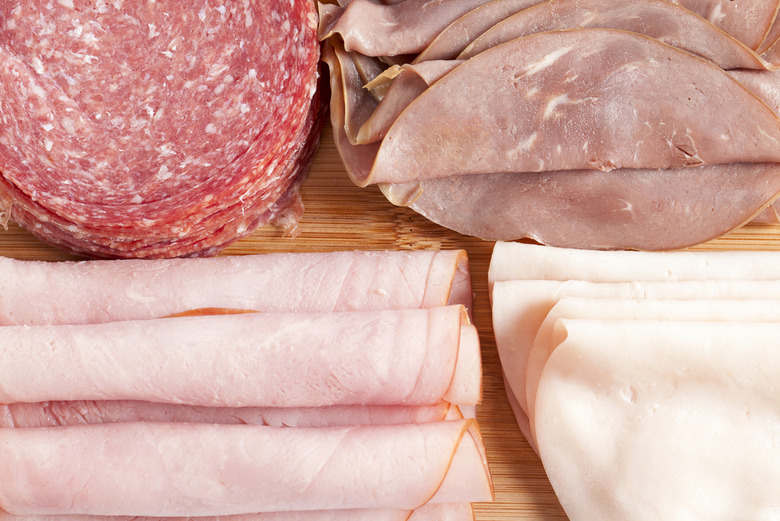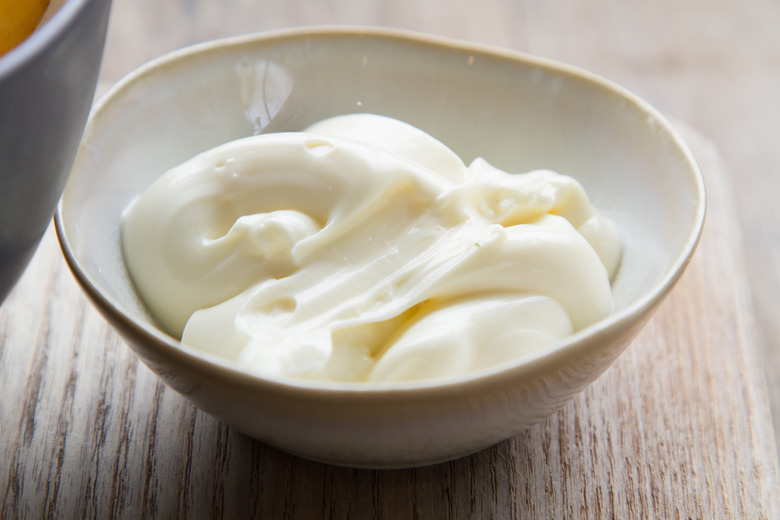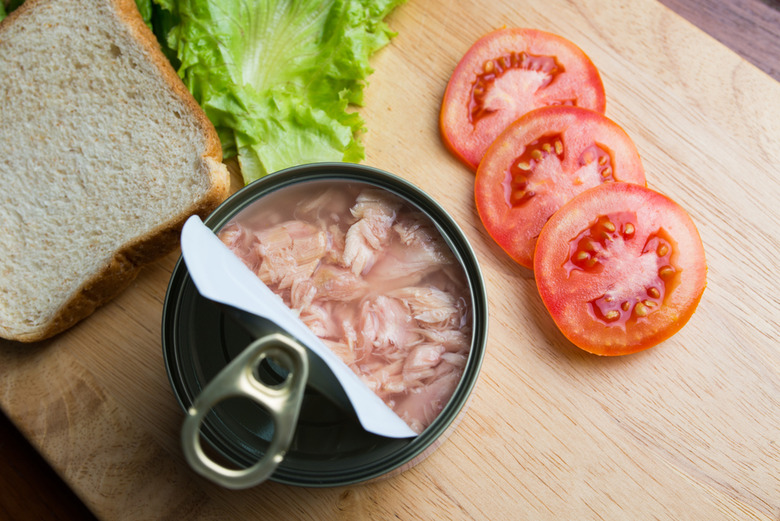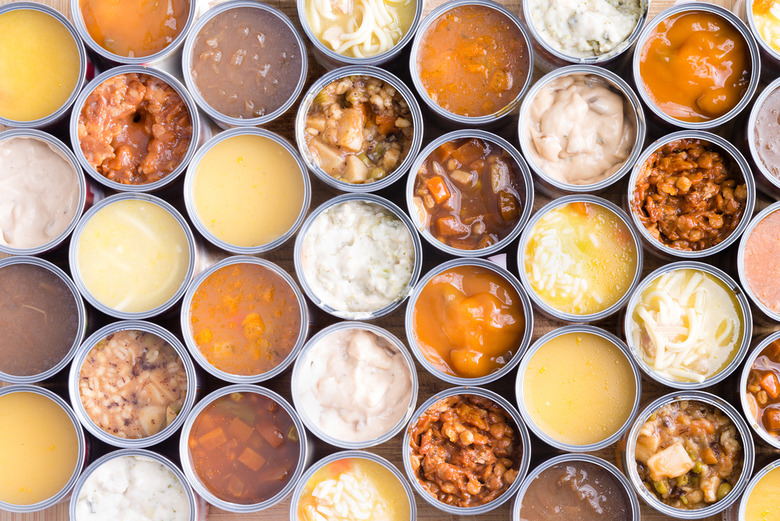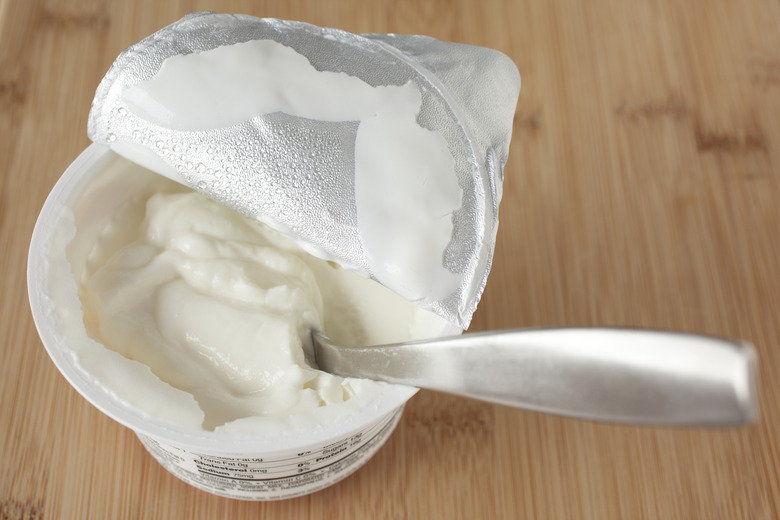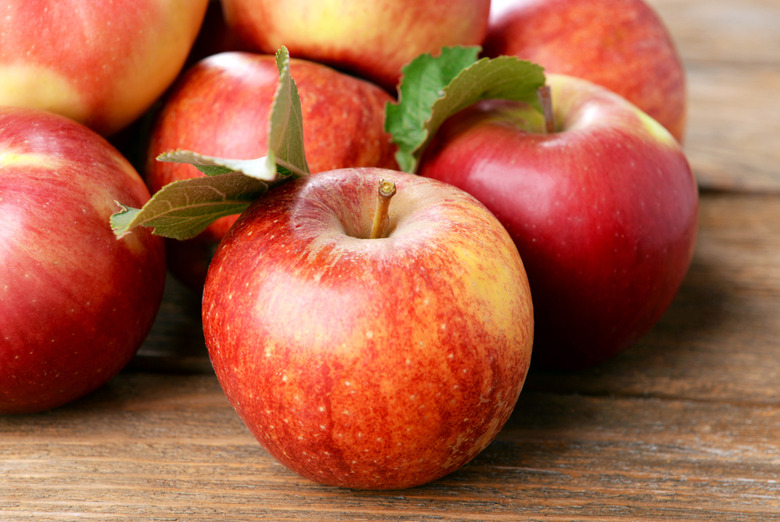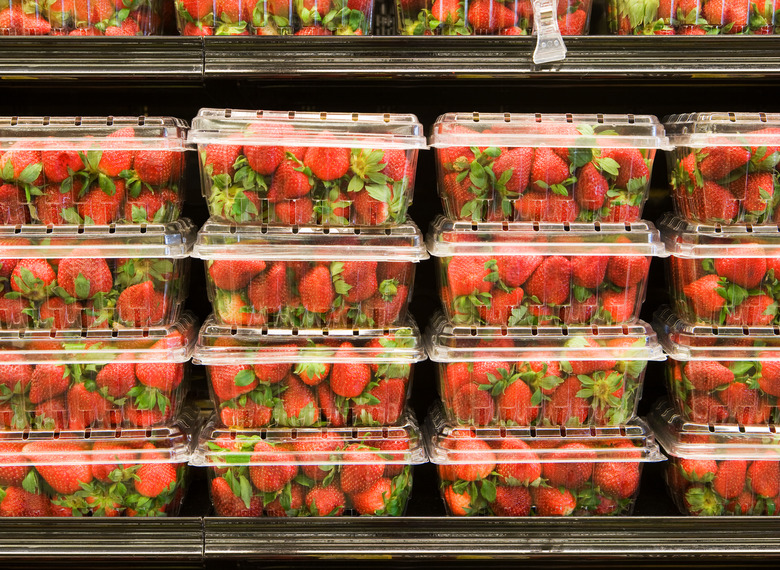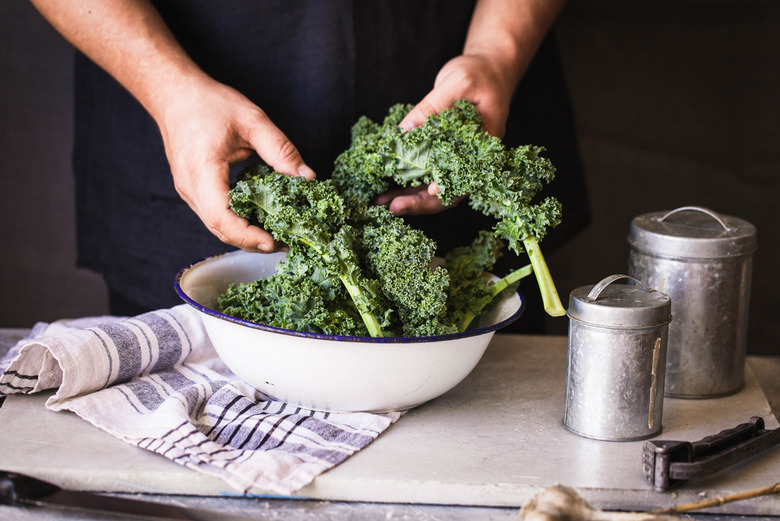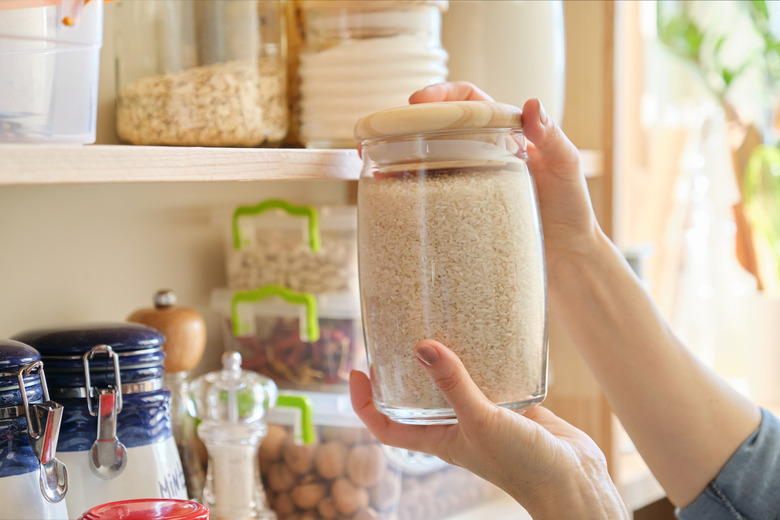How To Tell When Your Food Is Spoiled Or Bad
Contrary to popular belief, expiration or sell by dates on foods aren't necessarily a reliable way of telling whether something has gone bad. In fact, these dates are mostly aimed at retailers and let grocery stores know the date by which the product should be sold or removed from the shelf.
So take the sell-by dates with a grain of salt and use your sense of sight and smell instead. When it comes to going through your stash of groceries at home, you just need a small amount of know-how to tell if something should be tossed or kept.
Butter
It may be tempting to keep your butter on the counter so it gets silky and spreadable for making grilled cheese and spreading over toast. But you might be wondering: won't it go bad? It sure will. According to Land O'Lakes, you shouldn't leave butter at room temperature for more than four hours; you should store it wrapped or in a butter dish in your fridge. You can also freeze butter. When butter has gone bad, you'll know because it will taste slightly stale with a sour smell.
Bread
Whether you make your own bread or grab a loaf from the grocery store, everyone should know when to keep and when to toss this culinary staple. Grocery store bread is good for five to seven days after opening, but it can be consumed after that as long as there is no mold growth or it doesn't get crusty and stale. You can usually spot fuzzy, green growth on bread, so it's easy to tell when it's time to toss. Porous foods like bread can be contaminated with mold below the surface, which means you shouldn't just cut out the moldy spot and continue eating it. You can always freeze bread or whip up these recipes to help you finish off a loaf of bread before it goes bad.
Eggs
How can you tell if an egg is bad? If an egg is bad, it floats in water; and if it's still fresh, it sinks to the bottom (or settles somewhere in the middle). There's actually some truth to it, according to the U.S. Department of Agriculture and Food Safety. If an egg floats, it means it is old, but you should do a second check before you toss it to see if it really went bad. You can also crack the egg into a bowl and check for an off odor or unusual appearance before deciding to use or toss it. A spoiled egg will have a funky odor when you break open the shell, whether raw or cooked. If your eggs are good, use them to try out the many ways to cook eggs.
Milk
The best way to tell if milk has gone bad is usually through your senses. Some common signs of bad milk are chunky or lumpy texture, discoloration and a pungent sour smell that you'll notice right when you open the lid. If your milk is about to expire and you can't possibly drink it all, use some of these recipes to finish off the gallon.
Ice cream
When you pick up your favorite flavor of ice cream at the store, it usually doesn't last long enough in the freezer to go bad. But you should still know what to look for just in case. Unopened ice cream can last for two to three months past the "best before" date. The sign of spoiled ice cream is tiny ice shards on top of the ice cream and under the lid, which is sometimes OK if it's just beginning to turn. But very quickly, the ice cream can turn gooey and sticky — that means you should not be eating it. You don't want spoiled ice cream when you're trying to find something cool to eat to recover on a hot day.
Hard cheese
Hard cheese like Parmesan or pecorino Romano last a lot longer than soft cheeses like mozzarella. You can tell if hard cheeses have gone bad if there is deep mold throughout the block. According to the USDA, if hard cheese has only spots of surface mold, you can trim off the mold (at least an inch around and below the mold) and wrap the rest in fresh cling wrap. Here's our reminder to you to use that forgotten block of cheese on top of bolgonese or in your mac and cheese for dinner tonight before it goes bad.
Soft cheese
For soft cheeses like cream cheese, feta and mozzarella, any and all mold growth is reason enough to discard. This is also true for bags of shredded cheese — if you see any mold inside, throw the entire package out to avoid using moldy cheese in your favorite cheesy dish. But shredded cheese is one of those ingredients you should always keep in your freezer to ensure it stays fresh until you're ready to use it.
Uncooked red meat
If you have a few slabs of red meat in the fridge but haven't gotten around to making a pot of stew or grilling juicy steaks, you might want to take a look to see if they're still good to use. And don't be alarmed if you see discoloration alone, as that can happen with refrigerated meats. But if in addition to the color change, you smell an off odor and find the meat to be sticky or slimy to the touch, it's time to toss. Here's how long other meats and foods last in the fridge and freezer.
Onions
Chopping onions may be an unpleasant task, but the last thing you want is a rotten onion spreading a bad aroma in your kitchen. If you're not storing your onions in a mesh bag away from the fridge, you're doing it wrong. Onions need to be kept in well-ventilated places away from moisture. If you see moisture and soft spots, it can be a sign that your stash of onions is going bad.
Garlic
You should always buy whole, unpeeled bulbs of garlic — not only do they taste fresher but they also last longer. (If you buy pre-prepped garlic because you hate taking the skins off, try this genius hack that chefs use to peel them.) To tell if your garlic has gone bad, look for dark spots, signs of rot, or patches of green growth. You can also squeeze the garlic and if it feels too soft, it should be thrown away.
Fish
If you're on making a delicious fish dish at some point during the week, it's best to know that raw fish only lasts in the fridge for a couple of days. If your fish is cooked, it can remain sealed in your refrigerator for three to four days. Frozen, uncooked fish can last four to six months. Signs of spoilage include a slimy film growing on the fish, an extra-fishy stench or any sign of discoloration. Salmon, for instance, can take on dark or white spots as it expires. Cooking salmon that's gone bad is a surefire way to ruin an otherwise tasty heart-healthy dinner.
Chicken
From slow cooked in soup to roasted in the oven, there are plenty of ways to cook chicken. If you have leftover chicken in the fridge, keep in mind that cooked chicken should generally be tossed out after about four days, which is when bacteria starts to grow. For raw chicken, it can usually last in the refrigerator for up to two days. Look out for a sour smell or a slimy, mushy texture, which will indicate the chicken is a no-go.
Deli meat
Sliced deli meat like turkey, ham or salami are great to have on hand for the best sandwiches, but they don't have the longest shelf life. If your your meat develops a foul odor, throw it out immediately. As a general rule of thumb, make sure to eat deli meat within three to five days of opening the package.
Mayonnaise
Mayo is the ultimate sandwich condiment, and though the storebought stuff keeps fairly well in the fridge for two to four months after its been opened, there are a few things to look out for to know if it's gone south. When it starts to go bad, mayonnaise will begin to look a little more yellow instead of its normal creamy white color and get lumpier than usual. Another glaring sign is mold, and you should always discard the entire jar if there are any traces of it. Keep in mind that homemade mayo should be discarded after just one week in the fridge.
Takeout
The rules for your takeout favorites are similar to the rules for most home-cooked leftovers. Make sure the food isn't left at room temperature for more than two hours. After that, the food is usually still good for around three days. Just watch out for common signs of spoilage — mold, an odor or a slimy film.
Canned fish
If you're looking to cook up a vintage recipe no one makes anymore, such as tuna noodle casserole, or you're trying to add some healthy fatty fish like salmon to your diet, know that canned fish is one of those foods with an extremely long shelf life. These products can be consumed up to three years after the pack date. But if you open the can and smell a foul odor or notice discoloration, don't eat it.
Canned soup
With canned soup and beans, you can make some delicious and quick dinners for a cozy night in. Canned soup is good for two to five years after the pack date. However, keep in mind foods with more acidity, such as tomatoes, expire sooner than foods with low acidity. Similar to canned fish, discard the cans if there's an off-putting smell.
Yogurt
Yogurt is generally good to eat seven days beyond the printed sell-by date, and sometimes even longer. The easiest way to tell if yogurt has gone bad is if you smell a sour odor or spot mold growth. Another indicator of spoiled yogurt is a lumpy texture similar to cottage cheese. Don't let your yogurt go bad before trying to make this berrylicious parfait.
Fruit
The signs of overripe fruit vary depending on the fruit. Bananas are a special case since overripe bananas can be made into scrumptious banana bread. But you shouldn't eat fruits like apples, pears, oranges and stone fruit that become overly mushy, brown or develop mold. Insect holes can also indicate that another critter has munched on the fruit before you have, which means you should toss it.
Berries
Strawberries, blueberries and other sweet summer berries can last up to a week in the refrigerator. If you see mold growing on a few berries in a carton, discard them along with the berries touching them. Check the remaining berries for mold and wash thoroughly before enjoying. If you know you're not going to use all your berries before they go bad, throw them in the freezer to use later for healthy smoothies.
Herbs
Fresh herbs can be pricey compared to dried ones so you want to be able to use every last leaf. There are two types of herbs — soft herbs and hard herbs. Soft herbs have a bendy, soft stem, like mint, cilantro or basil, which is one of the foods you should never refrigerate. Hard herbs include rosemary, oregano and thyme, which have a tougher stem you can snap. You can tell they've gone bad for soft herbs if the leaves turn slimy, wilted and black. When hard herbs go bad, the leaves usually dry out and tend to change from green to yellow or brown.
Leafy greens and broccoli
When most greens begin to go bad, they become less green and more yellow. They would also have a slimy texture and foul odor. This is usually the case with broccoli, kale, and celery tops, but it could also apply to other fresh seasonal vegetables.
Rice
Uncooked rice easily lasts a year or two after being opened as long as it is kept in a sealed, airtight container. Leftover cooked rice is perfectly safe to eat for three to five days after being refrigerated. If the cooked rice appears dry or crunchy, you should throw it away. If you stocked up on rice and other dry items, you should brush up on the shelf life of rice, flour and other pantry staples.
More from The Daily Meal:
How to Make Your Food Last Longer
How to Use Food Scraps to Make Delicious Meals
How to Stock Your Pantry (and Take It to the Next Level)
50 Easy Dinner Ideas for Busy Weeknights
How to Cook Chicken, Turkey, Steak and 12 Other Foods Correctly
